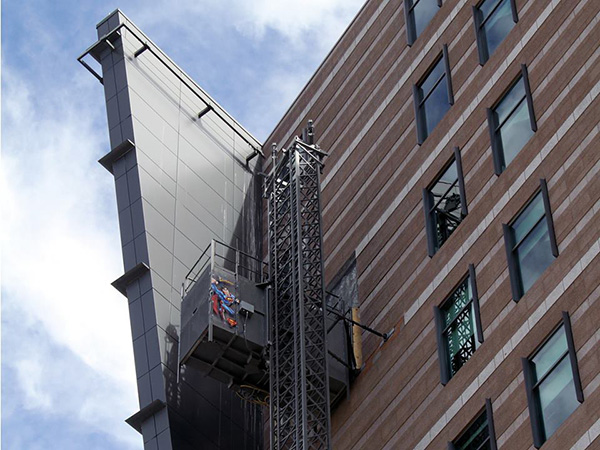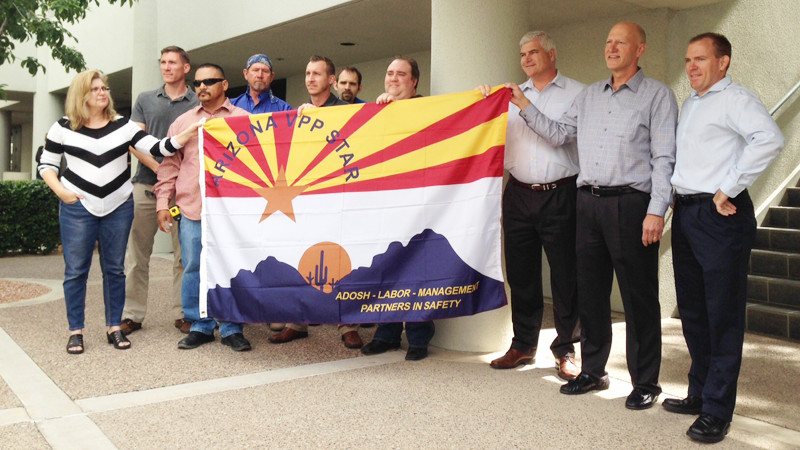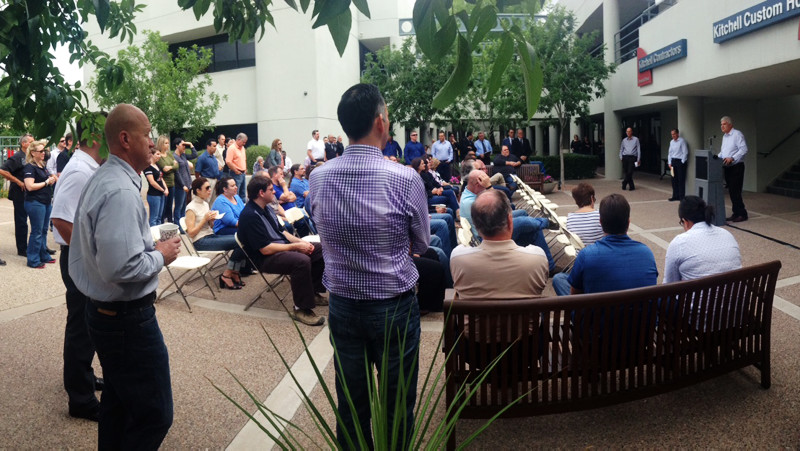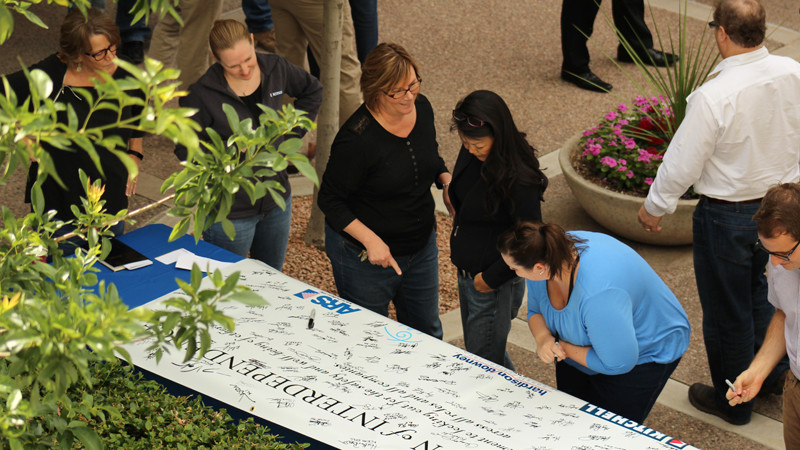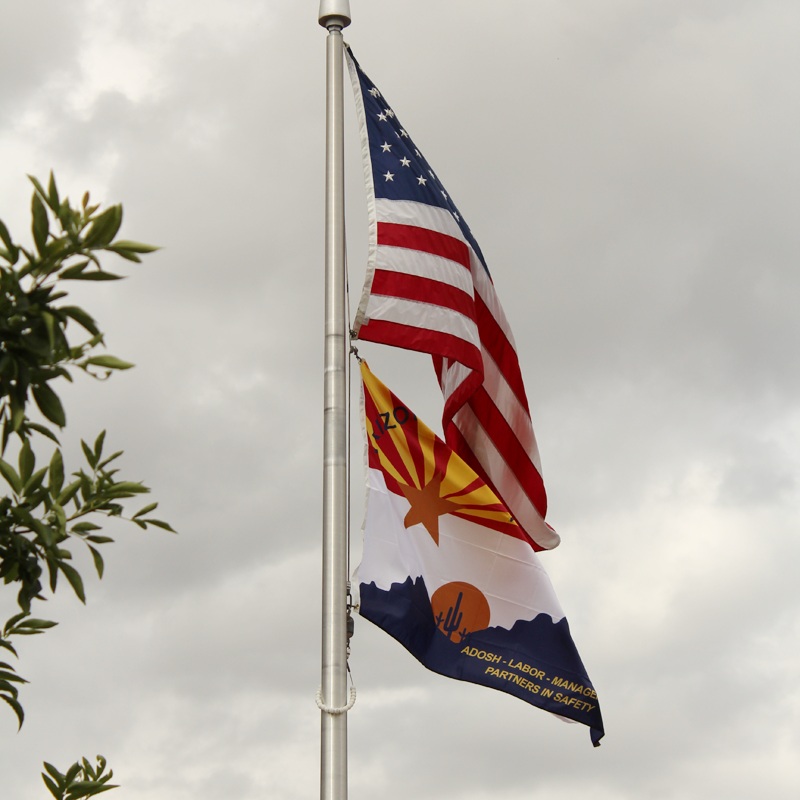Originally Seen in the Pages of Arizona Real Estate Magazine…
Noise, vibrations, dust and other disruptions are always a concern during hospital construction but never more (potentially) problematic than when the youngest, most vulnerable patients are a mere 5.5 inches away on the floor below. This is what’s happening right now at Phoenix Children’s Hospital, as shell space is built-out above the hospital’s Pediatric Epilepsy Monitoring Unit (PEMU), a joint program with Barrow Neurological Institute. In a PEMU, each patient’s room is outfitted with video equipment to capture seizure activity while a child’s brainwaves are recorded. The feedback is used to obtain highly accurate diagnoses and treatment plans.
Anticipating future need was strategically built into the design of Phoenix Children’s Hospital’s 11-story patient tower, which opened to patients in 2011. Just a year after opening, plans were set in motion to populate the top floors, and today we’re creating extra capacity on the tower’s ninth floor. The 45,000-square-foot space will feature 48 patient rooms. Kitchell is back on site as the general contractor, HKS is the architect and CCRD Partners is the M/E/P Engineer.
Don’t drop anything!
Just imagine how quietly the construction team must proceed to avoid making even the smallest sound or vibration. Noise mitigation is priority number one. It’s a construction site where communication is done via whispers, texts and email, and all field supervisors have radios in case an immediate shutdown of construction activities is necessary. And it’s a site where materials are brought into the building via an external hoist.

Everything the team does requires advance thought, meticulous planning and ongoing communication with hospital staff, which began during preconstruction and included deputizing one of the nurses “construction project manager.” Nothing could be a surprise. Even something as seemingly mundane as lifting a pipe could be an issue, because of the potential of the loud “clang” as the result of dropping it. This advance thought included orchestrating a “make noise” session for staff a month prior to construction. Together with our trade contractors, we demonstrated all noises that could be a potential impact to the eighth floor. This included floor grinding, shot pins, scissor lifts, roto-hammers, cutting, chopping, dropped pipe, saw cutting, shop vac and core drilling.
How to eliminate nose
Here are some of the tactics being deployed to ensure the comfort of the children and their families below the jobsite, while allowing staff to do their work unimpeded:
- A lift was built on the west side of the building to transport everything up and in for construction. Absolutely nothing is brought in through the inside of the building. The lift makes 100 trips daily. Because children love watching construction activities, we decorated the hoist with a decal of Superman so he appears to be flying each time the hoist passes in front of their windows.
- As much work as possible was done offsite, completely removing significant noise and vibration from the job site. For example, headwalls were built offsite and then ingeniously “split in two” to fit inside the outdoor lift and reassembled once on site.
- Ingenious phasing has been instituted. For example, the loudest activity is drilling into the floor (the ceiling of the 8th floor) which creates echoes and vibrations. Working with hospital staff, we developed a schedule to drill 30 minutes on and 30 minutes off.
- Infection Control Risk Assessment (ICRA) containment on the 8th floor was meticulously planned and executed long before construction began. We used cardboard mock-ups to create the center core of the floor (nurse work areas) and then adjusted areas to fit the changing needs of the facility. These adjustments required plumbing revisions to approximately 30 rooms on the floor below.
- Rubber mats were place throughout the 45,000-square-foot space to deaden the sound of the carts which traverse the expanse constantly throughout the day. And all cutting and chopping activities are required to be executed on a rubber mat.
- We’re upgrading the existing shell space fire sprinkler system for the 9th floor build-out, which requires being “wet” every night to keep the system energized. To mitigate the risk of an overnight leak, and potentially putting the 8th floor at risk, we place sensors on the floor at the end of each shift. In the event of a leak, these sensors signal team leaders’ cell phones on a SmartThings app. This allows for response time to be minutes instead of hours.
The schedule of direct impact activities, such as drilling, cutting, and materials transport, are communicated proactively and requested adjustments are always accommodated. Our project manager meets with the nursing staff on the 8th floor each morning at 7:15 a.m. to ensure that the flow of construction above is acceptable based on potential changes during the preceding night. Additionally, Kitchell meets with the nursing staff weekly (enhanced by homemade cupcakes) to discuss upcoming activities. When concern for patients and families, communication with staff and thorough forethought are embedded into every plan and every activity, construction doesn’t need to create commotion and disruption, even in a children’s hospital. Meticulous planning and ongoing collaboration with medical staff makes the process seamless and rewarding for all. And cupcakes don’t hurt either!

Dave Cottle is Phoenix Children’s Hospital Vice President of Planning, Design and Construction.

Aron Kirch is a Kitchell project manager.
